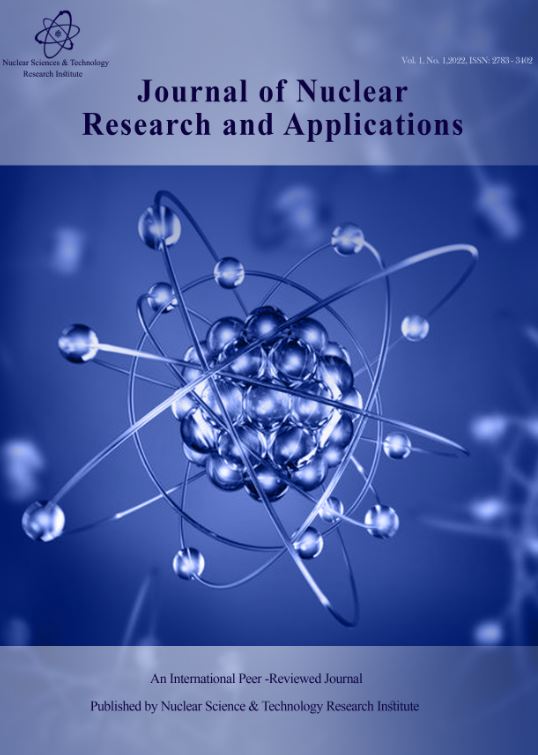Document Type : Research paper
Authors
1 Department of Nuclear Engineering, Faculty of Engineering, Tehran Science and Research Branch, Islamic Azad University, P.O. Box:14515-775, Tehran, Iran
2 Radiation Applications Research School, Nuclear Science and Technology Research Institute (NSTRI), P.O. Box:14395-836, Tehran, Iran
Abstract
In this study, degradation of phenol by electron beam irradiation in aqueous laboratory solutions and also in a wastewater of steel industry has been investigated. The standard solutions of phenol in the range of 5-22 kGy underwent electron irradiation and their concentrations before and after the exposure were measured using UV-Vis spectrophotometer at 460 nm. The concentration of phenol in the effluent before and after irradiation at 10 kGy was measured by GC/MS analysis. The effect of experimental parameters like absorbed dose and initial concentration on the efficiency removal was studied. According to the observations, with increasing absorbed doses the removal percentage increases and also in a constant dose by increasing the concentration the amount of removal gradually decreases. In the optimum dose,10 kGy, the removal percentages of phenol in the standard solution with concentration of 10 mg/L and in the wastewater of steel industry were 93.5% and 41%, respectively.
Keywords
Main Subjects
- Pallabi D, Gautam CM, Siddharth S, Abhay KS, Bably P, Krishna KS. Effluent Treatment Technologies in the Iron and Steel Industry - A State of the Art Review. Water Environ. Res. 2018 1 May;90(5):395-408.
- Guocheng L, Shiyuan L, Meng L, Libing L, Limei W, Lefu M, Zhaohui L, Caofeng P. Detection and quantification of phenol in liquid and gas phases using a clay/dye composite, Ind. Eng. Chem. 2018 25 June;62:284-290.
- Todorovic V. Acute phenol poisoning. Pregl. 2003;56(l)1:37-41.
- Kulkarni SJ, Kaware JP, Review on research for removal of phenol from wastewater, J. Sci. Res. Pub. 2013;3,1-5.
- Wang JL, Xu LJ, Advanced oxidation processes for wastewater treatment: formation of hydroxyl radical and application, Rev. Environ. Sci. Technol., 2012;42(3):251-325.
- Lin SH, Wang CH, Ozonation of phenolic wastewater in a gas-induced reactor with a fixed granular activated carbon bed, Ind. Chem. Res. 2003;42:1648-1653.
- Turhan K, Uzman S, Removal of phenol from water using ozone, Desalination 2008;229(1-3):257-263.
- Zazo JA, Casas JA, Mohedano AF, Rodriguez JJ. Semicontinuous Fenton oxidation of phenol in aqueous solution. A kinetic study, Water Res. 2009;43(16):4063-4069.
- Babuponnusami A, Muthukumar K, Advanced oxidation of phenol: a comparison between Fenton, Electro-Fenton, Sono-electro-Fenton and Photoelectro-Fenton processes, Chem. Eng. J. 2011;183(15):1-9.
- Esplugas S, Giménez J, Contreras S, Pascual E, Rodrı́guez M. Comparison of different advanced oxidation processes for phenol degradation, Water Res. 2002;36(4):1034-1042.
- Chmielewski AG, Application of ionizing radiation to environment protection. Nukleonika. 2005;50:17-34.
- Abdel Rahman RO, Hung YT. Application of ionizing radiation in wastewater treatment. An overview. Water. 2020;12,1:19.
- Ettinger MB, Ruchhoft CC, Lishka RJ. Sensitive 4-aminoantipyrine method for phenolic compounds. Anal. Chem 1951;23(12):1783-1788.
- Kazeraninejad M, Akhavan A, Dalali N. Removing aromatic organic compounds of henol and furfural from petroleum refinery wastewater using electron beams, J. Nucl. Sci. and Tech. 2017;80:35-43. [In Persian]

